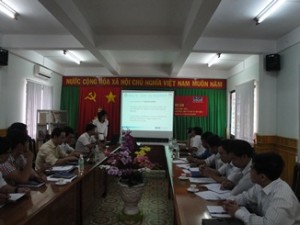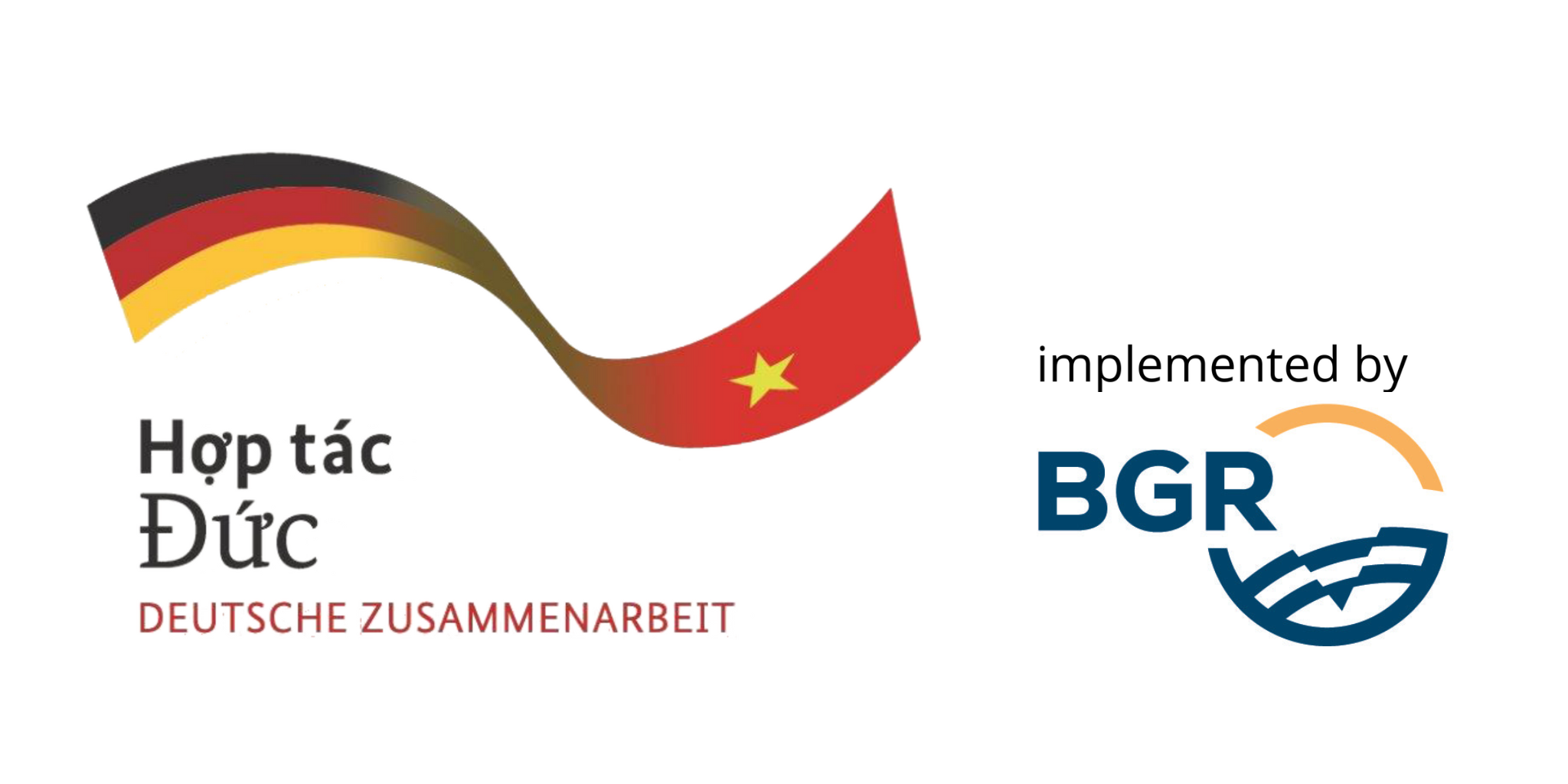2nd training on hydrogeochemistry: theoretical background, field method and data processing
 Nha Trang: The 2nd Hydrogeochemistry training course was organized by IGPVN project for the staffs of CEVIWRPI in Nha Trang during 16th and 17th October 2012. The training content was prepared by Dr. Hoang Thi Hanh, technical assistant of IGPVN project. Participants included 15 staffs from CEVIWRPI, 2 staffs from Quang Ngai Donre and 2 staffs from CWRPI. Mr. Do Tien Hung, Director of CWRPI, Mr. Nguyen Luu, Head of CEVIWRPI and Mr. Ho Minh Tho, Vice Head of CEVIWRPI also attended the training course.
Nha Trang: The 2nd Hydrogeochemistry training course was organized by IGPVN project for the staffs of CEVIWRPI in Nha Trang during 16th and 17th October 2012. The training content was prepared by Dr. Hoang Thi Hanh, technical assistant of IGPVN project. Participants included 15 staffs from CEVIWRPI, 2 staffs from Quang Ngai Donre and 2 staffs from CWRPI. Mr. Do Tien Hung, Director of CWRPI, Mr. Nguyen Luu, Head of CEVIWRPI and Mr. Ho Minh Tho, Vice Head of CEVIWRPI also attended the training course.
The objectives of this training course were to affirm and improve the understanding of the learners on some specific issues relating to hydrogeochemical study; to make clear to the learners about the field works, sampling, sample preservation and analysis; to provide the learners a chance to practise with the WTW equipments: measure pH, conductivity values and dissolved oxygen content of some water samples and calibrate the equipment using the appropriate standard solutions; to help the learners learn about data processing in hydrogeochemistry.
A number of basic concepts on hydrogeochemistry including pH, redox potential, electrical conductivity, salinity, dissolved oxygen, alkalinity, turbidity; clarify the meaning of each concept, the measuring unit, influencing factors and measuring equipments were summarized and presented to the learners. The chemical composition of groundwater was explained and important processes that can control groundwater chemistry (adsorption/desorption, ion exchange, oxidation-reduction, carbonate diagenesis, silicate dissolution) were briefly presented. The basic steps on preparation for a field trip, on-site protocol, sample preservation and sample analysis in laboratory were explained to the learners: how to prepare for a field trip, what to do in the field to collect water samples, which parameters should be measured on-site, how to preserve water samples for chemical analysis and what kind of analytical instruments can be used for determination of various components in natural water. Multiple-choice questions relating to the theoretical background and field method was assigned to the learner in order to check their understanding on the training contents.

Some techniques on data processing were explained to the learners and they knew how to calculate the charge balance error and what can be inferred from this calculation. A number of typical graphs used in hydrogeochemical study (Piper diagram, Stiff diagram and Schoeller diagram) were introduced in detail to the learners. They also learned about many other graphs (histogram, bar chart, box plot, scatter plot, time series) that were very helpful in display and visualization of the hydrogeochemical data. They installed and practised with SigmaPlot 10.0, an effective software that can create many different types of graphs as well as perform some basic statistical calculation.

According to the learners, the Hydrogeochemical training course provided them generally very useful knowledge and practice. They had good chance to practice with the WTW box, measure some water parameters and calibrate the equipment.
(IGPVN)

